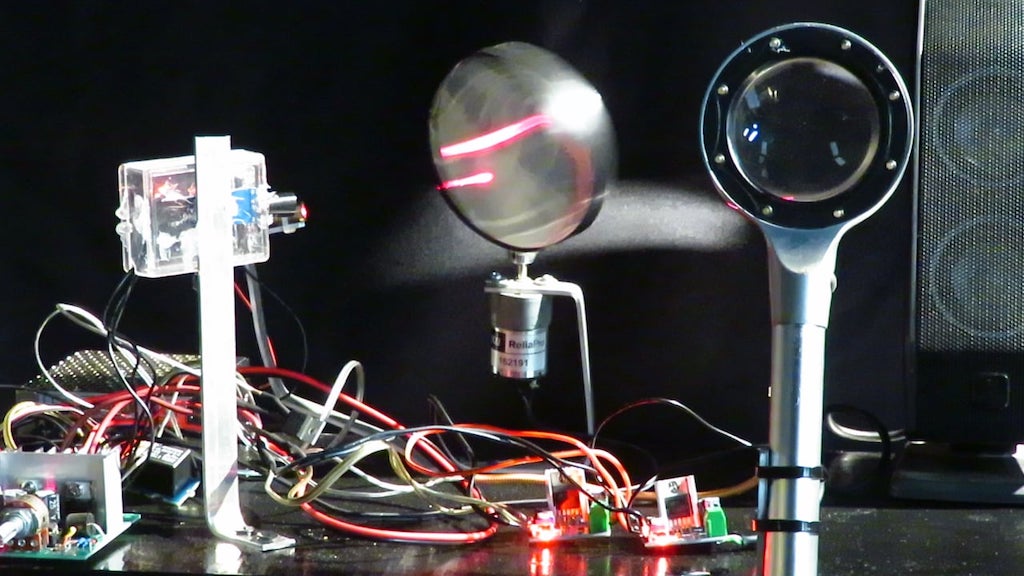The Burnell Galactic Positioning System, A Robotic Laser and Spinning Mirror System That Creates Sound

Kal Spelletich, a San Francisco robotics artist and longtime friend of Laughing Squid has created The Burnell Galactic Positioning System" an incredible robotic installation that uses lasers and spinning double-sided mirrors to create sound.
A laser beam is pointed at a two-sided spinning variable speed concave mirror. Each side of the mirror produces a different sound due to each mirrors' unique characteristics. The laser hits a light sensor that is amplified to produce a sound with each passing light wave.
Spelletich built this machine in honor of astronomer Jocelyn Bell Burnell, who is responsible for the discovery of radio pulsars in 1967. This discovery earned a Nobel Prize, however, the credit was not given to Burnell, but to her male advisor. That oversight has since been rectified.
Related PostsTested Creates a Large Laser-Cut Dymaxion GlobeThe Diffusion of Light', A Project Featuring White Light From a Laser Focused on Broken Glass and MirrorsSplit Brain Robotics, Interactive Robots Controlled by the Left and Right Brainwaves of Willing VolunteersA String of Colorful Planetary Holiday Lights Representing Our Solar SystemAn Amazing Pair of Interactive Robots That Use Split Brain Waves to Engage in MovementHow the Massive Energy of a Spinning Black Hole Can Be Harvested With an Enveloping MirrorThe discovery, which she made as a graduate student, earned a Nobel Prize in 1974. And it could one day form the basis of a galactic positioning system" for navigating outside our solar system. But Bell Burnell didn't collect the Nobel. Instead, the award went to her supervisor at the University of Cambridge, Antony Hewish. She is now recognized as the pioneer who made this breakthrough discovery.
Follow Laughing Squid on Facebook, Twitter, and Subscribe by Email.
The post The Burnell Galactic Positioning System, A Robotic Laser and Spinning Mirror System That Creates Sound first appeared on Laughing Squid.